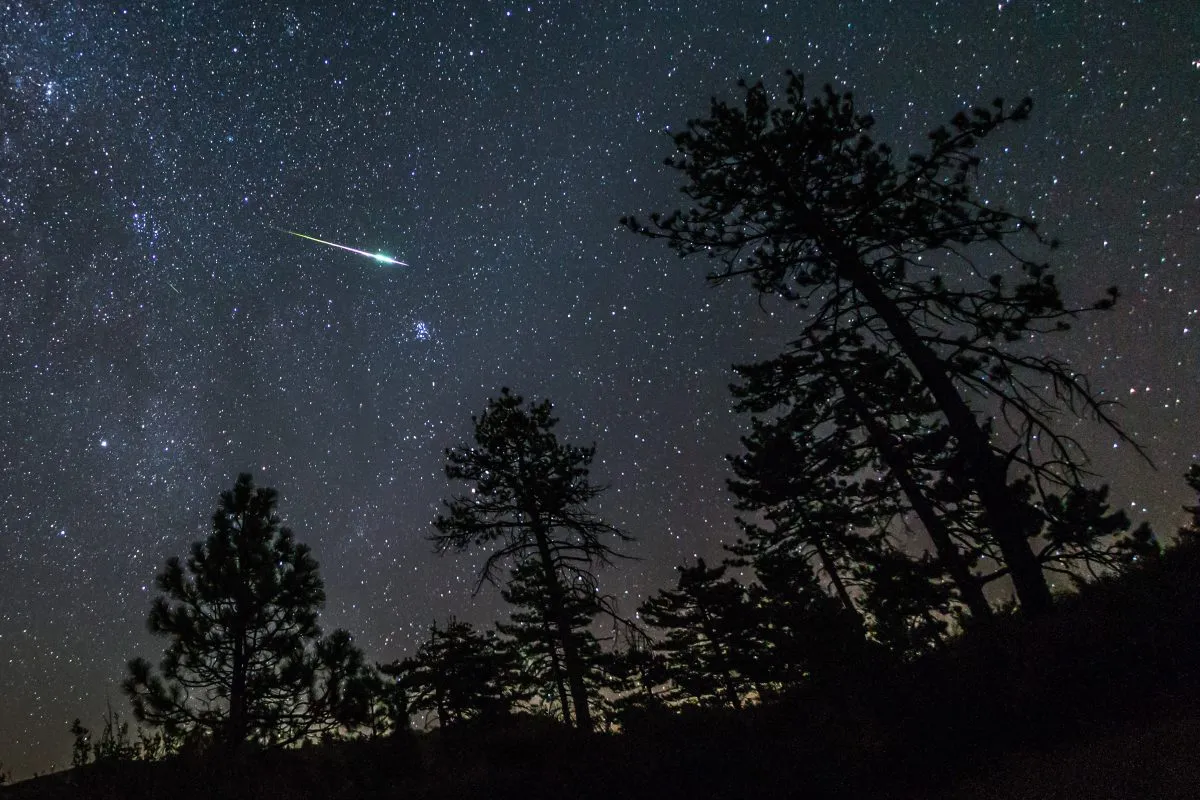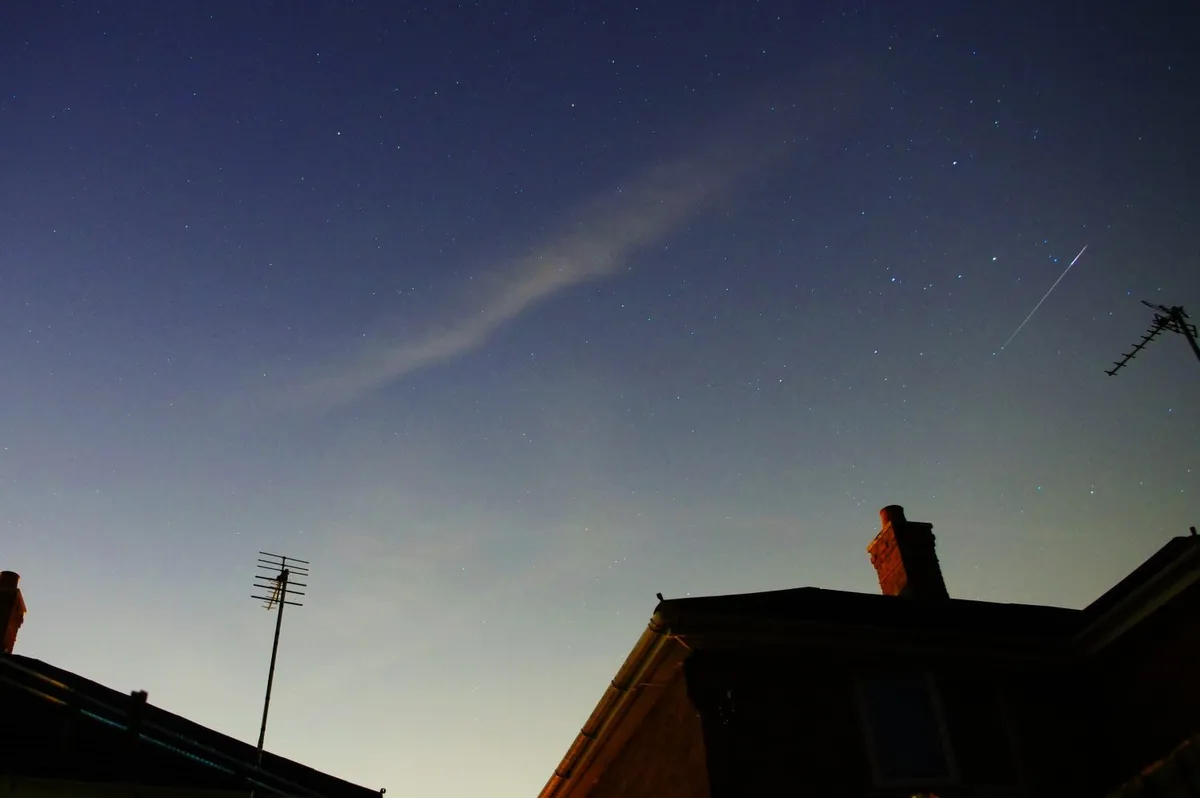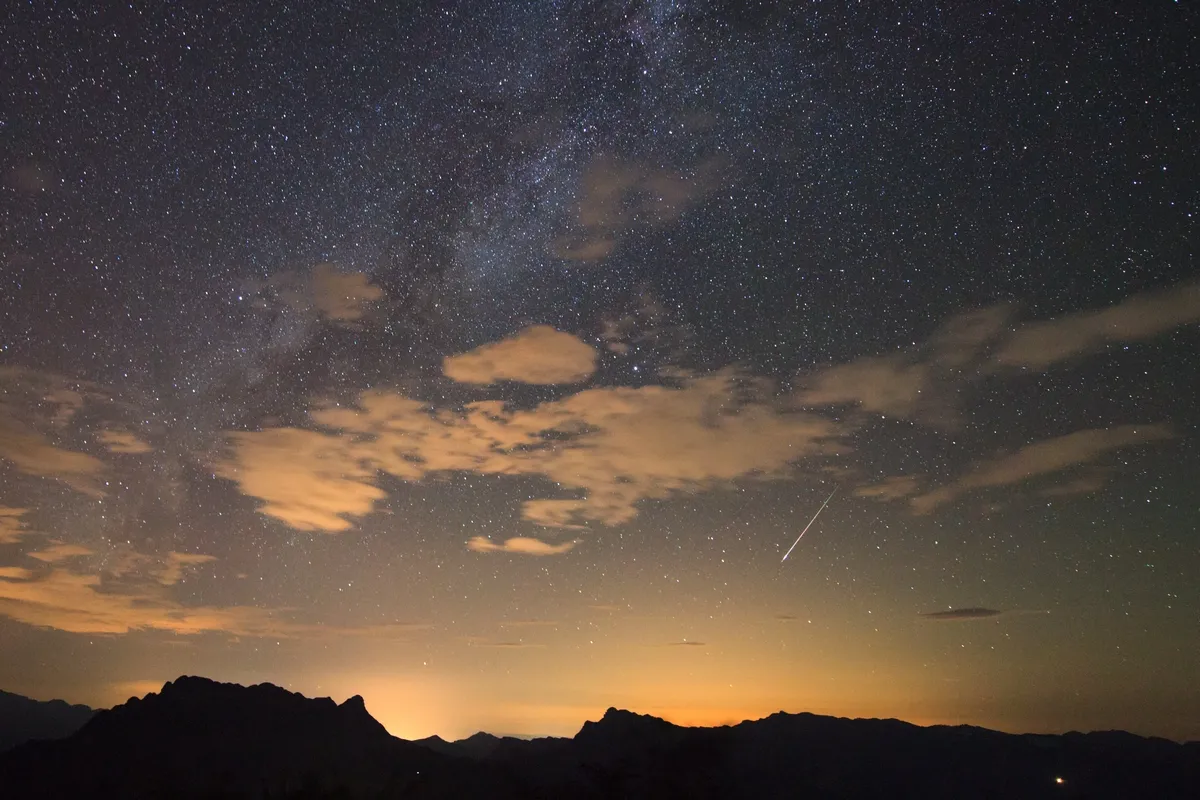The Perseids, like any great meteor shower, is an excellent opportunity to capture a unique and dramatic photo for your collection.
Taking a photograph of a Perseid meteor can be a relatively simple exercise provided you know where to point your camera, and when to expect the peak activity to occur.
With a bit of preparation, you can set up a relatively hands-free photography station to monitor the sky for you.

Which camera?
In terms of which camera to pick when attempting to photograph a Perseid meteor, DSLRs are a good option because they offer the most flexibility for wide-field photography of the sky.
Interchangeable lenses allow you to select the best equipment for photographing a Perseid.
Narrow fields of view will lower the likelihood of capturing a meteor in any given exposure, so use your widest lens on its widest setting. Focal lengths between 10-24mm are ideal.
You could also try using an all-sky camera or a multi-camera mount.
If you need help working out where to look in the night sky, read our guide to observing the Perseid meteor shower.

Equipment and settings
As with all low-light and time-lapse photography, a tripod is essential for photographing meteors.
Better yet, you can use compact equatorial tracking systems designed for light payloads to keep your stars nice and sharp over long exposures.
Use an intervalometer to do the boring bit!
Taking continuous exposures back-to-back with a large area of sky in view can be hard work, so this valuable piece of photographic kit should make the session more enjoyable.

Make sure your memory card has plenty of space, and set your camera to shoot RAW images.
Most cameras have a liveview zoom feature, allowing you to manually focus until a bright star appears as pin-sharp as possible.
Bear in mind that most lenses focus ‘beyond infinity’ for mechanical reasons, so you can’t rely on the focus dial entirely.
You’ll also find that stars at the edge of the field appear much less point-like, but the edges can be cropped out later.

Top tips
- Experiment with exposure settings. Test out your camera until you get pleasing results for your local sky conditions and camera/lens combination.
- Most cameras give best overall long exposure results between ISO 800-3200, but how bright your photo appears will depend on exposure time and photographic speed of the lens.
- If lens is wide with a maximum aperture of F/4 or faster, you can rely on 15-30 second exposures to produce sharp stars on a static tripod, whilst ensuring meteors will be conspicuous in the final image.
- Controlling sky brightness in light-polluted images should also be a consideration: a blown-out sky will reduce the contrast of fainter meteors.
- Target the highest ratio of exposure to on-board camera processing and keep the delay between images as short as possible.
- Consider turning off your camera’s on-board long-exposure noise reduction to increase the rate of images you can take.
- Fewer images means lower likelihood your camera is gathering light at the critical moment. Take steps to clean up noise with software afterwards.

If you do manage to photograph a Perseid meteor, be sure to share with us via email or on our Twitter and Facebook accounts.
Tom Kerss is an astronomer and writer. For more stargazing advice, follow him on Twitter.